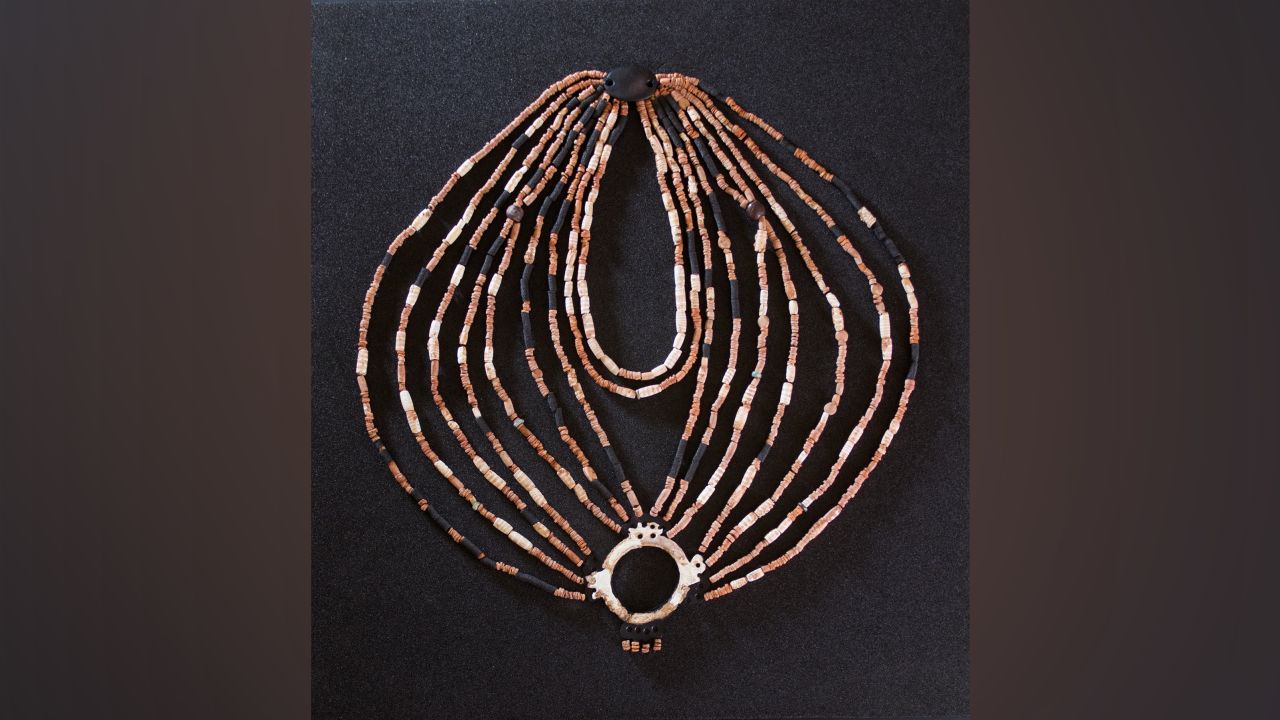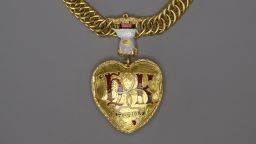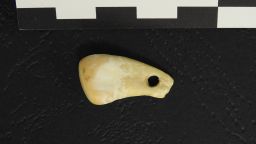Editor’s note: Sign up for CNN’s Wonder Theory science newsletter. Explore the universe with news on fascinating discoveries, scientific advancements and more.
Researchers have reassembled an ancient ornate necklace discovered in the grave of a child who lived in the Neolithic village of Ba’ja in what’s now southern Jordan.
More than 2,500 colorful stone and shell beads were found in the grave, which was dated between 7400 and 6800 BC.
Archaeological excavations have occurred at the 9,000-year-old village of Ba’ja, near the ancient city of Petra, since 1997.
In 2018, researchers discovered the grave of an 8-year-old child buried in a fetal position. Thousands of beads covered the child’s chest and neck, and a perforated stone pendant and mother-of-pearl ring were also found.
The team carefully documented how the beads were distributed across the grave and determined they were once part of a larger ornament that had come apart over time.
A genetic analysis of the remains, which were poorly preserved, didn’t reveal anything about the child’s health, cause of death, dietary habits or biological identity. Instead, researchers focused on the beads and the story they might tell about the child as well as Neolithic funerary practices.
A study detailing the findings published Wednesday in the journal PLOS ONE.
“Our aim was to challenge time degradation and to reimagine the initial composition in order to best explore the significance of this symbolic category of material culture, not as mere group of beads, but as an ornamental creation with further aesthetic, artisanal and socioeconomic implications,” the authors wrote in the study.
An intricate puzzle
The array of tubular, flat and disk-shaped beads were mainly made from red calcite as well as hematite, turquoise and marine shells. The researchers noticed that the dominant color theme seemed to be red and white, with the other materials providing hints of contrasting colors. There were also two amber beads, “an unprecedented material never attested before for this period,” according to the study.
The shells, collected from the Red Sea, and some of the stone beads were not local to the area, suggesting they were acquired through cultural exchanges. The piece suggests that Neolithic society included interactions between traders, skilled artisans and high-status individuals who may have commissioned such designs.
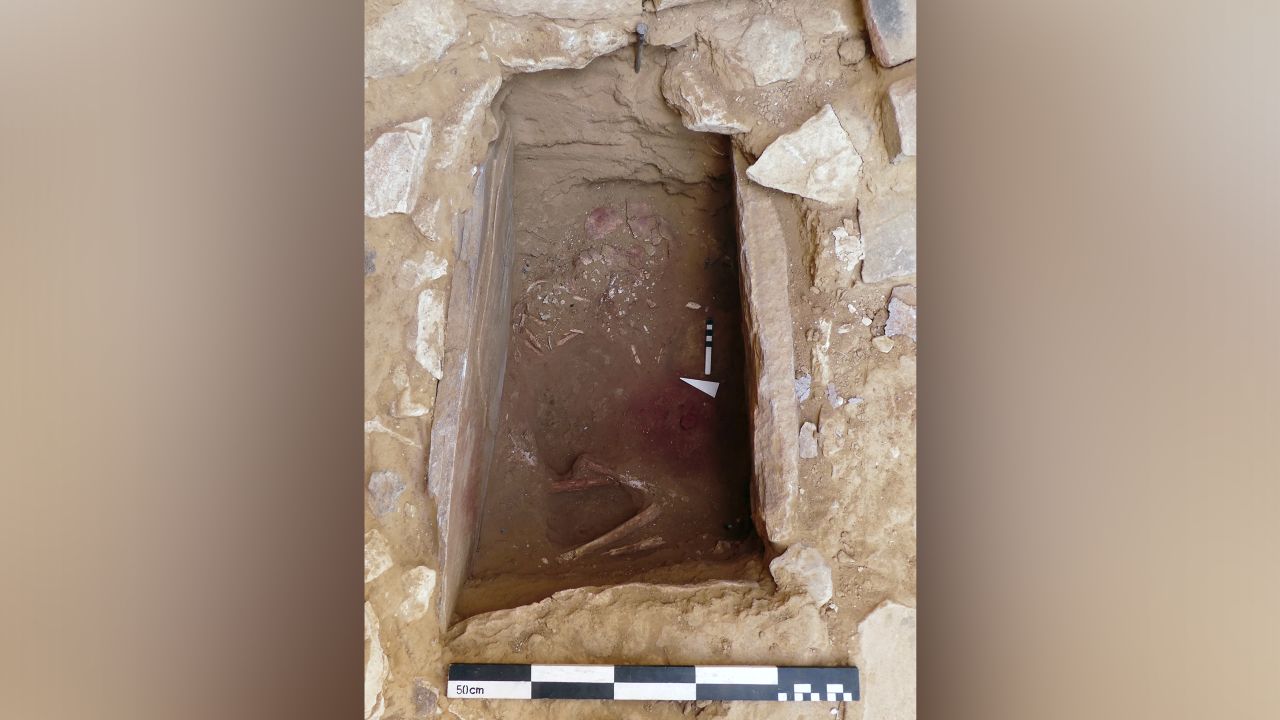
A worn, flat, oval-shaped piece of hematite was determined to be a spacer or buckle that once secured the piece behind the neck, while the degraded remains of the mother-of-pearl ring, which had four offshoots, was determined to be the centerpiece of the necklace. There were still some disk beads connected to the ring when it was found.
Patterns of wear on some of the turquoise and hematite pieces suggest they may have been included in the design after being used by others, possibly the child’s elders, the researchers said.
The team conducted a lengthy, detailed analysis of the beads, studying their composition and craftsmanship to determine how they might have fit together. Ultimately, after trying multiple configurations, they determined that rows of beads spread out from either side of the mother-of-pearl ring, covering the neck and chest of the wearer. Seven rows were connected to the ring, while three were separated from it.
At its maximum, the necklace likely weighed 226 grams, or about half a pound.
The process of physically reconstructing the original necklace took almost three years, partially due to disruptions caused by the pandemic, said lead study author Hala Alarashi, an archaeologist and researcher at the Spanish National Research Council and University of Côte d’Azur.
The necklace is now on display at the Petra Museum.
“The reconstruction results exceeded our expectations as it revealed an imposing multi-row necklace of complex structure and attractive design,” the authors wrote in the study.
Decoding ancient meaning
The intricate design of the necklace, one of the oldest and most impressive Neolithic ornaments yet discovered, suggests the child was of high social status. The researchers believe the necklace was commissioned to accompany the child in death. If that’s the case, the funeral was likely a public event, with family, relatives and those from other villages attending.
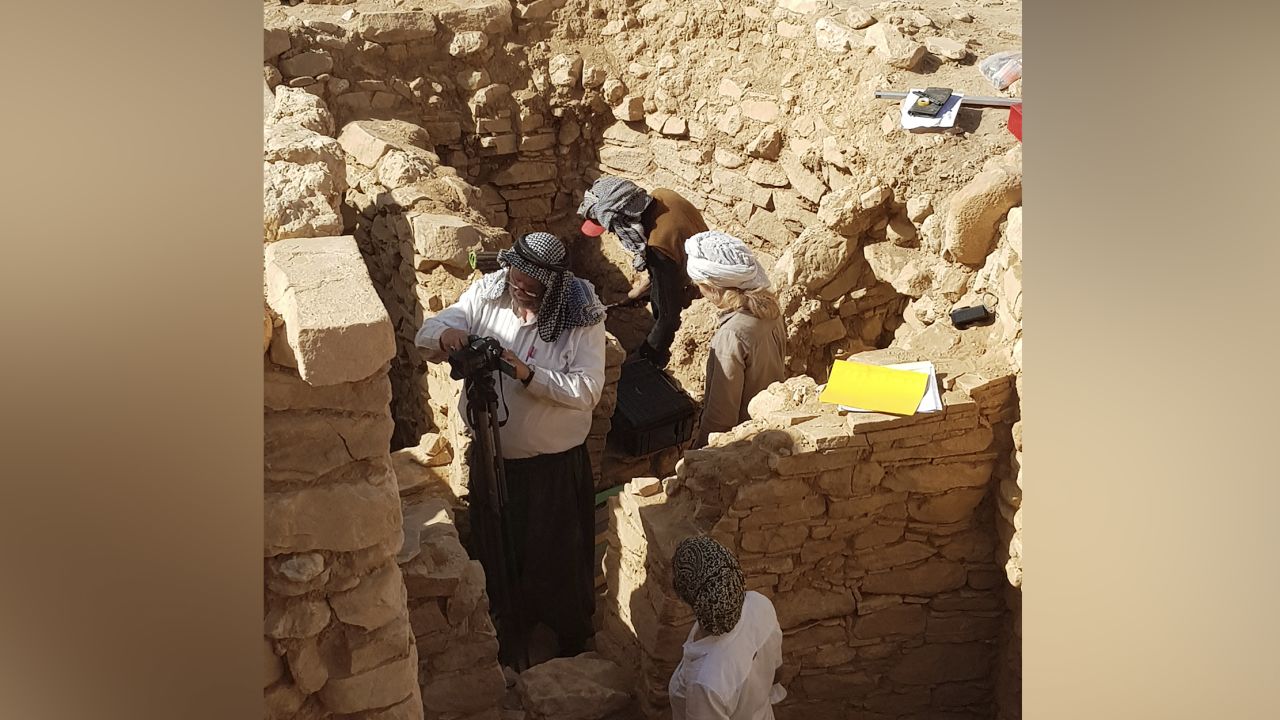
“The shared experience, emotions, gratitude, or sorrow at this occasion certainly contributed to consolidating the community, in densifying the collective memory which are fundamental in such moments of loss,” the authors wrote.
The necklace’s overall design may suggest abundance, diversity and exclusivity, among other messages that may remain locked in the past. It’s also possible the necklace was meant to provide the child with wealth in the afterlife.
“The large volume, complex organization, symmetry, harmony, beauty of objects, play of lights and colors are in fact reminiscent of the refined ornaments of the latter urban Mesopotamian and Egyptian societies,” according to the study authors.
Other beautiful ornaments have been found in children’s graves in Ba’ja, and Alarashi is conducting a study to determine their cultural significance.
“There is no better context than burials to tell us the stories of these preliterate societies,” Alarashi said. “Body ornaments are powerful means of communication. They convey information on the individuals who display them but also on those who made them.”


